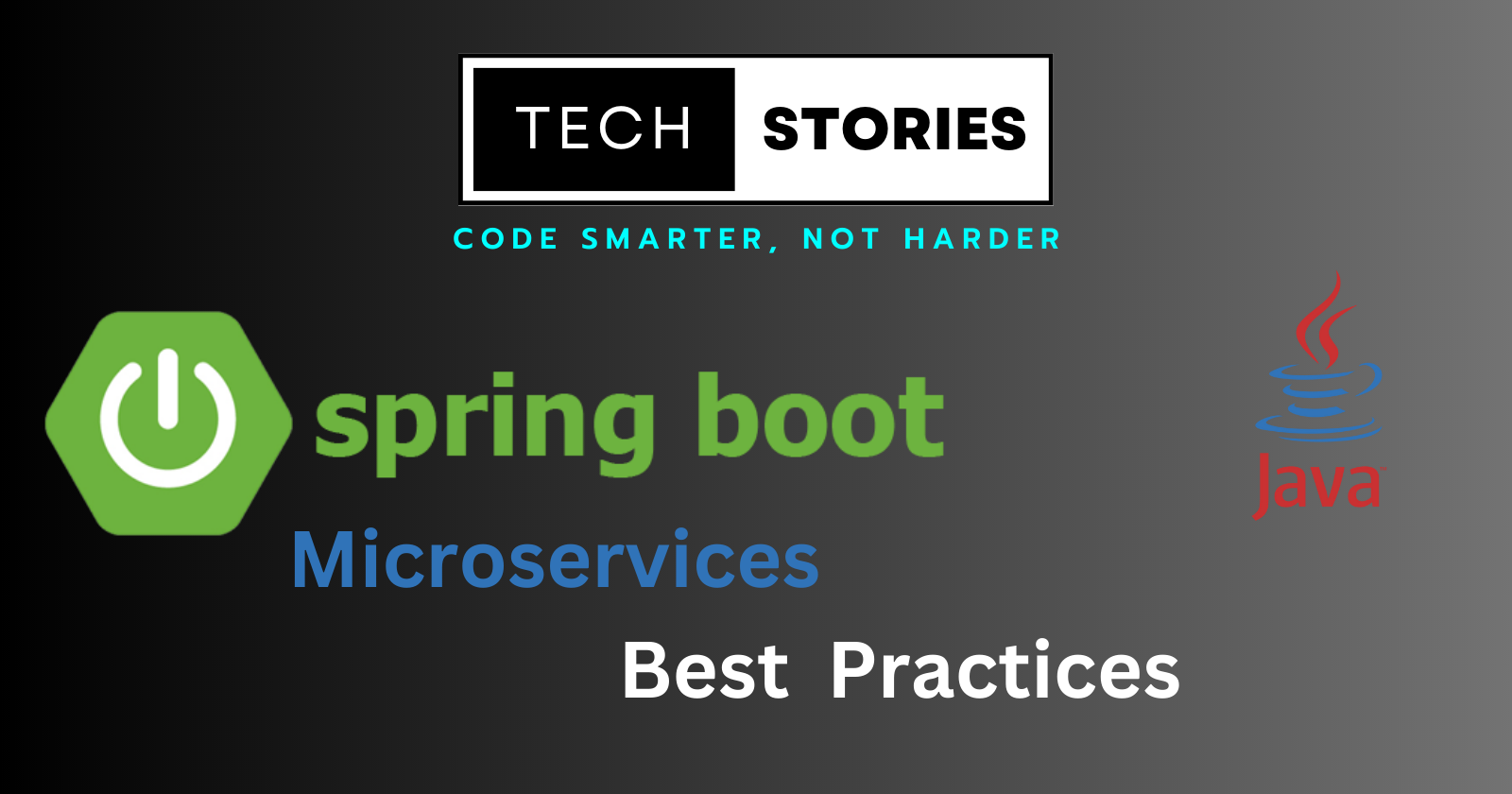Best Practices for Building Flexible Microservices with Spring Boot
 Sujeet Kumar
Sujeet KumarTable of contents

As microservices continue to gain popularity, developers are looking for ways to build them in a flexible and efficient way. Spring Boot, a popular Java-based framework, is a powerful tool that can help developers build microservices with ease. This blog will cover some of the best practices for building flexible microservices using Spring Boot.
Introduction
Spring Boot
Spring Boot is a Java-based open-source framework that helps developers build production-grade applications. It provides a range of features like auto-configuration, simplified dependency management, embedded servers, and many more.
Microservices architecture
Microservices architecture is an approach to building large and complex applications by breaking them into smaller, independent services. These services are built and deployed independently, allowing for better scalability, fault tolerance, and maintainability.
Use Spring Cloud Config to Externalize Configuration
One of the key benefits of microservices is the ability to deploy them independently. However, this can lead to a proliferation of configuration files that are difficult to manage. Spring Cloud Config is a great solution to this problem, allowing you to externalize your configuration and manage it in one central location.
To use Spring Cloud Config, you must create a separate configuration server and configure your microservices to retrieve their configuration from this server.
To set up the Spring Cloud Config server, add the following dependencies to your project:
<dependency>
<groupId>org.springframework.cloud</groupId>
<artifactId>spring-cloud-config-server</artifactId>
</dependency>
Add the following property in your application.properties file:
spring.cloud.config.server.git.uri=https://github.com/user/myconfigrepo.git
Here's an example of how to set up a Spring Cloud Config Server:
@SpringBootApplication
@EnableConfigServer
public class ConfigServerApplication {
public static void main(String[] args) {
SpringApplication.run(ConfigServerApplication.class, args);
}
}
Use Spring Cloud Sleuth for Distributed Tracing
When working with microservices, it's important to have visibility into how requests flow through your system. Distributed tracing is a technique for tracking requests as they move between different microservices. Spring Cloud Sleuth is a great tool for implementing distributed tracing in your microservices.
Spring Cloud Sleuth adds trace and span IDs to your microservice requests, which can be used to track requests as they move through your system.
To use Spring Cloud Sleuth, add the below dependency in the pom.xml file:
<dependency>
<groupId>org.springframework.cloud</groupId>
<artifactId>spring-cloud-starter-sleuth</artifactId>
</dependency>
In addition, configure the Logger pattern to include the trace and span IDs in the log messages.
Here's an example of how to use Spring Cloud Sleuth in a Spring Boot microservice:
@RestController
public class SampleController {
private static final Logger LOG = LoggerFactory.getLogger(SampleController.class);
@Autowired
private Tracer tracer;
@GetMapping("/hello")
public String hello() {
LOG.info("Hello from sample application");
Span span = tracer.nextSpan().name("custom-span").start();
try (Tracer.SpanInScope ws = tracer.withSpan(span)) {
LOG.info("Inside custom span");
return "Hello World";
} finally {
span.end();
}
}
}
Use Circuit Breakers for Resilience
Microservices are often distributed across different networks and can be prone to failures. Circuit breakers are a pattern for building resilient microservices that can handle these failures gracefully. Spring Boot provides several libraries for implementing circuit breakers, such as Hystrix and Resilience4j.
To use Resilience4j in your project, add the below dependencies in the pom.xml file:
<dependency>
<groupId>io.github.resilience4j</groupId>
<artifactId>resilience4j-spring-boot2</artifactId>
<version>1.7.1</version>
</dependency>
We can annotate the method that needs protection with the @CircuitBreaker annotation. This annotation specifies the Circuit Breaker's name and the type of exception that should trigger the Circuit Breaker.
@Service
public class MyService {
@CircuitBreaker(name = "myService", fallbackMethod = "fallback")
public void myMethod() {
// Code that can potentially fail
}
public void fallback(Throwable t) {
// Fallback code to be executed when the Circuit Breaker is open
}
}
Use Spring Cloud Gateway for API Gateway
In a microservice architecture, it's common to have a large number of services that are exposed to the outside world. An API gateway is a pattern for managing these services in a unified way. Spring Cloud Gateway is a great tool for building an API gateway in your microservice architecture.
To use Spring Cloud Gateway, add the below dependency in the pom.xml file:
<dependency>
<groupId>org.springframework.cloud</groupId>
<artifactId>spring-cloud-starter-gateway</artifactId>
</dependency>
Here's an example of how to configure Spring Cloud Gateway in a Spring Boot microservice:
@Configuration
@EnableDiscoveryClient
public class GatewayConfig {
@Bean
public RouteLocator customRouteLocator(RouteLocatorBuilder builder) {
return builder.routes()
.route("users", r -> r.path("/users/**")
.filters(f -> f.stripPrefix(1))
.uri("lb://user-service"))
.build();
}
}
Use Spring Cloud Stream for Event-Driven Microservices
Event-driven microservices are a pattern for building scalable, loosely coupled systems. Spring Cloud Stream is a great tool for building event-driven microservices in a Spring Boot application.
To use Spring Cloud Stream, we need to add the following dependencies to our Spring Boot project:
<dependency>
<groupId>org.springframework.cloud</groupId>
<artifactId>spring-cloud-stream</artifactId>
</dependency>
<dependency>
<groupId>org.springframework.cloud</groupId>
<artifactId>spring-cloud-stream-binder-rabbit</artifactId>
</dependency>
Next, we need to create a Spring Cloud Stream application by adding the @EnableBinding annotation to our Spring Boot application class.
@EnableBinding(MyChannels.class)
@SpringBootApplication
public class SpringCloudStreamApplication {
public static void main(String[] args) {
SpringApplication.run(SpringCloudStreamApplication.class, args);
}
}
interface MyChannels {
@Input
SubscribableChannel input();
@Output
MessageChannel output();
}
In this example, we have defined two channels: an input channel and an output channel. The @Input annotation indicates that the input channel will receive messages, while the @Output annotation indicates that the output channel will send messages.
Now, we can create a consumer using the @StreamListener annotation and a producer using the MessageChannel.
Conclusion
Spring Boot is a powerful tool for building flexible microservices. By following these best practices, you can build robust, scalable microservices that can handle failures gracefully and integrate seamlessly with other microservices in your system. Whether you're building a simple microservice or a complex system of microservices, Spring Boot has the tools you need to get the job done right.
Note
Subscribe to my newsletter
Read articles from Sujeet Kumar directly inside your inbox. Subscribe to the newsletter, and don't miss out.
Written by

Sujeet Kumar
Sujeet Kumar
As a software developer with over 7 years of experience in the IT industry, I have worked extensively with various programming languages including Java, Spring Boot, JavaScript, and React. I also have strong knowledge and experience in Web Design and Development using tools like Figma and Webflow.